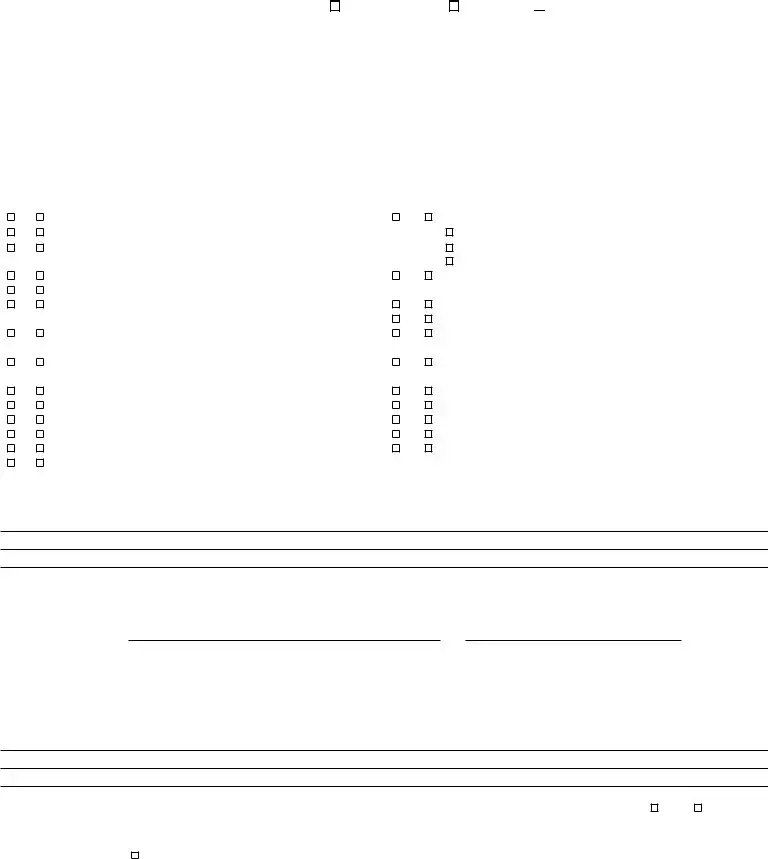49 CFR 391.41
Physical Qualifications for Drivers
THE DRIVER’S ROLE
Responsibilities, work schedules, physical and emotional demands, and lifestyles among commercial drivers vary by the type of driving that they do. Some of the main types of drivers include the following: turn around or short
relay (drivers return to |
their home base each |
evening); long relay |
(drivers drive 9-11 hours and |
then have at least a |
10 |
hour off-duty period), |
straight through haul |
(cross country drivers); and |
team drivers (drivers |
share the driving by |
alternating their 5-hour driving periods and 5-hour rest periods).
The following factors may be involved in a driver’s performance of duties: abrupt schedule changes and rotating work schedules, which may result in irregular sleep patterns and a driver beginning a trip in a fatigued condition; long hours; extended time away from family and friends, which may result in lack of social support; tight pickup and delivery schedules, with irregularity in work, rest, and eating patterns, adverse road , weather and traffic conditions, which may cause delays and lead to hurriedly loading or unloading cargo in order to compensate for the lost time; and environmental conditions such as excessive vibration, noise, and extremes in temperatures. Transporting passengers or hazardous materials may add to the demands on the commercial driver.
There may be duties in addition to the driving task for which a driver is responsible and needs to be fit. Some of these responsibilities are: coupling and uncoupling trailer(s) from the tractor; loading and unloading trailer(s) (sometimes a driver may lift a heavy load or unload as much as 50,000 pounds of freight after sitting for a long period of time without any stretching period); inspecting the operating condition of tractor and trailer(s) before, during, and after delivery of cargo; lifting, installing and removing heavy tire chains; and lifting heavy tarpaulins to cover open top trailers. The above tasks demand agility, the ability to bend and stoop, the ability to maintain a crouching position to inspect the underside of the vehicle, frequent entering and exiting of the cab, and the ability to climb ladders on the tractor and/or trailer(s).
In addition, a driver must have the perceptual skill to monitor a sometimes complex driving situation, the judgment skills to make quick decisions, when necessary, and the manipulative skills to control an oversize steering wheel, shift gears using a manual transmission, and maneuver a vehicle in crowded areas.
391.41PHYSICAL QUALIFICATION FOR DRIVERS
a)A person shall not drive a commercial motor vehicle unless he is physically qualified to do so
and, except as provided in 391.67, has on his person the original, or a photographic copy, of a medical examiner’s certificate that he is physically qualified to drive a commercial motor vehicle.
b)A person is physically qualified to drive a motor vehicle if that person:
1)Has no loss of a foot, a leg, a hand, or an arm, or has been granted a Skill Performance Evaluation (SPE) Certificate (formerly Limb Waiver Program) pursuant to 391.49.
2) Has no impairment of; (i) A hand or finger which interferes with prehension or power grasping; or (ii) An arm, foot, or leg which interferes with the ability to perform normal tasks associated with operating a commercial motor vehicle; or any other significant limb defect or limitation which interferes with the ability to perform normal tasks associated with operating a commercial motor vehicle; or has been granted a SPE Certificate pursuant to 391.49.
3) Has no established medical history or clinical
diagnosis of diabetes mellitus currently requiring insulin for control;
4)Has no current clinical diagnosis of myocardial infarction, angina pectoris, coronary insufficiency, thrombosis, or any other cardiovascular disease of a variety known to be accompanied by syncope, dyspnea, collapse, or congestive cardiac failure.
5)Has no established medical history or clinical diagnosis of a respiratory dysfunction likely to interfere with his ability to control and drive a commercial motor vehicle safely.
6)Has no current clinical diagnosis of high blood pressure likely to interfere with his ability to operate a commercial motor vehicle safely.
7)Has no established medical history or clinical diagnosis of rheumatic, arthritic, orthopedic, muscular, neuromuscular, or vascular disease which interferes with his ability to control and operate a commercial motor vehicle safely.
8)Has no established medical history or clinical diagnosis of epilepsy or any other condition which is likely to cause loss of consciousness or any loss of ability to control a commercial motor vehicle.
9)Has no mental, nervous, organic, or functional disease or psychiatric disorder likely to interfere with his ability to drive a commercial motor vehicle safely.
10)Has distant visual acuity of at least 20/40 (Snellen) in each eye without corrective lenses or visual acuity separately corrected to 20/40 (Snellen) or better with corrective lenses, distant binocular acuity of at least 20/40 (Snellen) in both eyes with or without corrective lenses, field of vision of at least 70 degrees in the horizontal meridian in each eye, and the ability to recognize the colors of traffic signals and devices showing standard red, green and amber.
11) First perceives a forced whispered voice in the better ear not less than 5 feet with or without the use of a hearing aid, or, if tested by use of an audiometric device, does not have an average hearing loss in the better ear greater than 40 decibels at 500 Hz, 1,000 Hz, and 2,000 Hz with or without a hearing aid when the audiometric device is calibrated to American National Standard (formerly ASA Standards) 224.5-1951.
12)(i) Does not use a controlled substance identified in 21 CFR 1308.11 Schedule I, an amphetamine, a narcotic, or any other habit-forming drug. (ii) Exception: A driver may use such a substance or drug, if the substance or drug is prescribed by a licensed medical practitioner who:
(A)Is familiar with the driver’s medical history and assigned duties; and (B) has advised the driver that the prescribed substance or drug will not adversely affect the driver’s ability to safely operate a commercial motor vehicle.
13) Has no current clinical diagnosis of alcoholism. For further information, see INSTRUCTIONS TO MEDICAL EXAMINER included in this form.
INSTRUCTIONS TO THE MEDICAL EXAMINER
General Information
The purpose of this examination is to determine a driver’s physical qualification to operate a commercial motor vehicle (CMV) in interstate commerce according to the requirements in 49 CFR 391.41-49. Therefore, the medical examiner must be knowledgeable of these requirements and guidelines developed by the FMCSA to assist the medical examiner in making the qualification determination. The medical examiner should be familiar with the driver’s responsibilities and work environment and is referred to the section on the form. The Driver’s Role.
In addition to reviewing the Health History section with the driver and conducting the physical examination, the medical examiner should discuss common prescriptions and over-the-counter medications relative to the side effects and hazards of these medications while driving. Educate driver to read warning labels on all medications. History of certain conditions may be cause for rejection, particularly if required by regulation, or may indicate the need for additional laboratory tests or more stringent examinations perhaps by a medical specialist. These decisions are usually made by the medical
examiner in light of the driver’s job responsibilities, work schedule and potential for the condition to render the driver unsafe.
Medical conditions should be recorded even if they are not cause for denial, and they should be discussed with the driver to encourage
appropriate remedial care. This advice is especially needed when a condition, if neglected, could develop into a serious illness that could affect driving.
If the medical examiner determines that the driver is fit to drive and is also able to perform non-driving responsibilities as may be required, the medical examiner signs the medical certificate which the driver must carry with his/her license. The certificate must be dated. Under current regulations, the certificate is valid for 2 years, unless the driver has a medical condition that does not prohibit driving but does require more frequent monitoring. In such situations, the medical certificate should be issued for a shorter length of time. The physical examination should be done carefully and at least as complete as indicated by the attached form. Contact the FMCSA at (202) 366-1790 for further information (a vision exemption, qualifying drivers under 49 CFR 391.64, etc).
Interpretation of Medical Standards
Since the issuance of the regulations for physical qualifications for commercial drivers, the Federal Motor Carrier Safety Administration (FMCSA) has published recommendations called Advisory Criteria to help medical examiners in determining whether a driver meets the physical qualifications for commercial driving. These recommendations have been condensed to
provide information to medical examiners that (1) is directly relevant to the physical examination and
(2)is not already included in the medical examination form. The specific regulation is printed in italics and its reference by section is highlighted.
Federal Motor Carrier Safety Regulations
-Advisory Criteria-
Loss of Limb: 391.41(b)(1)
A person is physically qualified to drive a commercial motor vehicle if that person:
Has no loss of a foot, leg, hand or an arm, or has been granted a Skill Performance Evaluation (SPE) Certificate pursuant to Section 391.49.
Limb Impairment: 391.41(b)(2)
A person is physically qualified to drive a commercial motor vehicle if that person: Has no i m p a i r m e n t o f . , ( i ) A h a n d o r f i n g e r w h i c h interferes with prehension or power grasping; or
(ii)An arm, foot, or leg which interferes with the ability to perform normal tasks associated with operating a commercial motor vehicle; or (iii) Any other significant limb defect or limitation which interferes with the ability to perform normal tasks associated with operating a commercial motor vehicle; Perform normal tasks associated with operating a commercial motor vehicle; or (iv) Has been granted a Skill Performance Evaluation Certificate pursuant to Section 391.49.
A person who suffers loss of a foot, leg, hand or arm or whose limb impairment in any way interferes with the safe performance of normal tasks associated with operating a commercial motor vehicle is subject to the Skill Performance Evaluation (SPE) Certification Program pursuant to Section 391 . 49, assuming the person is otherwise qualified.
With the advancement of technology, medical aids and equipment modifications have b e e n d e v e l o p e d t o c o m p e n s a t e f o r c e r t a i n


 No
No


 Regular
Regular  Irregular
Irregular

